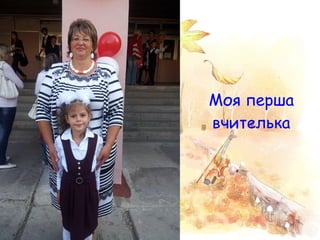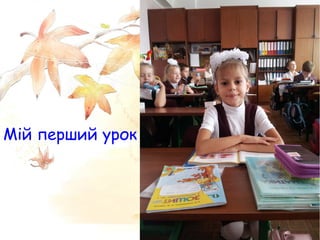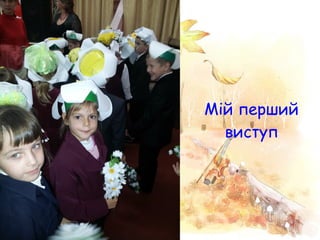1 of 7







Ad
Recommended
Ssc04 seguridad pasiva. airgbag y pretensoresmigueltwo
╠²
AUTOMOCI├ōN - SISTEMAS DE SEGURIDAD Y CONFORTABILIDAD. SEGURIDAD PASIVA.Nhom09
Nhom09Thß╗¦y Ti├¬n Trß║¦n
╠²
Diigo l├Ā mß╗Öt c├┤ng cß╗ź tß╗Ģ chß╗®c trß╗▒c tuyß║┐n mß║Īnh mß║Į cho ph├®p ngŲ░ß╗Øi d├╣ng quß║Żn l├Į th├┤ng tin c├Ī nh├ón, ─æ├Īnh dß║źu v├Ā chia sß║╗ nß╗Öi dung tr├¬n nhiß╗üu thiß║┐t bß╗ŗ. Phi├¬n bß║Żn 5.0 n├óng cß║źp vß╗øi nhiß╗üu t├Łnh n─āng mß╗øi nhŲ░ ch├║ th├Łch ß║Żnh chß╗źp m├Ān h├¼nh, ghi ch├║ c├Ī nh├ón v├Ā c├Īc c├┤ng cß╗ź hß╗Żp t├Īc nghi├¬n cß╗®u nh├│m. C├Īc t├Łnh n─āng nß╗Ģi bß║Łt bao gß╗ōm khß║Ż n─āng ─æ├Īnh dß║źu v─ān bß║Żn, lŲ░u trß╗» trang web, v├Ā t├¼m kiß║┐m to├Ān bß╗Ö nß╗Öi dung ─æ├Ż lŲ░u, gi├║p ngŲ░ß╗Øi d├╣ng dß╗ģ d├Āng quß║Żn l├Į v├Ā truy cß║Łp th├┤ng tin.58152main aeronautics educator
58152main aeronautics educatorSmart Vino
╠²
This NASA document provides information about an educator's guide on aeronautics with activities in science, math, and technology. The guide and other NASA education products can be accessed online at the NASA Spacelink website. The guide contains activities to engage students in grades 2-4 and sparks their interest in aeronautics through toy gliders and following the careers of pilots, astronauts, and aeronautical engineers.Basic laws
Basic lawsSmart Vino
╠²
This document discusses three basic laws of aerodynamics: Newton's Laws of Motion. It explains the Law of Inertia which states that an object at rest will remain at rest and an object in motion will remain in motion unless acted on by an outside force. It describes the Law of Acceleration which says that force is directly proportional to mass and change in velocity. It also outlines Newton's Third Law of equal and opposite reaction, giving the example of torque effect and recoil from a gun.Jayam profile ppt 2011 12
Jayam profile ppt 2011 12Smart Vino
╠²
Jayam College of Engineering and Technology (JCET) provides world-class engineering education and fosters research and entrepreneurship. Located on 80 acres near Hogenakkal Falls, it has 2500 students and 4000+ alumni. JCET offers UG and PG programs in engineering and business and has strong industry partnerships that help students gain work experience and high placement rates. It aims to develop leaders through quality education and a focus on research.Als seminar
Als seminarSmart Vino
╠²
This document discusses airborne laser scanning (ALS) and its applications. It begins by defining ALS and its history. It then describes the key components of a typical ALS system, including a laser, scanner, GPS, IMU, and control units. It discusses how ALS measures distance and collects point cloud data. Application examples are given, such as generating digital terrain models and surface models over large areas. The document also includes a case study on using ALS and high-resolution satellite data to study geomorphic features in parts of the Elbe River valley in Germany.Induction motors unit iii
Induction motors unit iiiSmart Vino
╠²
This document provides information about a subject code and unit taught by two lecturers, Mrs. A. Sangari and Mrs. P. T. Subasini, in the Electrical and Electronics Engineering department. The subject and unit are about induction motors and specifically discusses the concept of slip in induction motors.Autorotations
AutorotationsSmart Vino
╠²
Autorotation is the process by which a helicopter can descend and land without engine power by using the airflow coming up from the ground or air during descent to turn the rotor blades and maintain control. During autorotation, the helicopter trades altitude for the energy required to spin the rotor blades at a speed that provides enough lift to control the aircraft. The pilot lowers the collective to reduce blade drag and tilt the total aerodynamic force vector forward to maintain rotor RPM as the helicopter descends.Dc motors unit i
Dc motors unit iSmart Vino
╠²
The document provides information about a class on DC motors taught by Mrs. A. Sangari and Mrs. P.T. Subasini. It lists the subject code as 131307 for the second year Electrical and Electronics Engineering students. The class covers the principles of operation, back emf and torque equations, characteristics of series, shunt, and compound DC motors. It also discusses starting methods and speed control of series and shunt DC motors.Dc generators unit i
Dc generators unit iSmart Vino
╠²
This document provides details about the subject Electrical Machines taught by Mrs. A. Sangari and Mrs. P.T. Subasini. The subject code is 131307 and it covers DC generators in the first unit, including their construction details, the emf equation, methods of excitation for self and separately excited generators, and the characteristics and parallel operation of series, shunt, and compound generators.Ssc05 sistemas de seguridad contra robomigueltwo
╠²
SSC SISTEMAS DE SEGURIDAD Y CONFORTABILIDAD. SISTEMAS DE SEGURIDAD CONTRA EL ROBO. INMOBILIZADORES, CIERRE CENTRALIZADO...Airspace training
Airspace trainingSmart Vino
╠²
The document summarizes the different classes of airspace in the United States, including controlled airspace (Classes A, B, C, D, E), uncontrolled airspace (Class G), and special use airspace such as restricted areas, prohibited areas, warning areas, military operations areas, and controlled firing areas. It describes the operating rules, pilot certification and equipment requirements, dimensions and other characteristics of each class of airspace.Conning
ConningSmart Vino
╠²
As a helicopter develops lift during takeoff and flight, the blade tips rise above straight-out position and assume a coned shape. This coning occurs due to the combined effects of centrifugal force from blade rotation, which adds rigidity, and developing lift from the collective. Some coning is normal, but excessive coning can cause problems like decreased lifting area and blade stress due to factors like low RPM, high gross weight, turbulence, or high-G maneuvers reducing centrifugal force or requiring more lift.Engineering graphics free hand sketch
Engineering graphics free hand sketchSmart Vino
╠²
The document discusses engineering graphics and freehand sketching. It covers curves used in engineering like conics, cycloids, and involutes. It also discusses representing 3D objects through multiple views and developing visualization skills through freehand sketching. The document then provides step-by-step instructions on orthographic projections using first angle projection. It demonstrates drawing front, side, and top views from pictorial presentations. Finally, it outlines the general procedure for freehand sketching orthographic views from an isometric pictorial view.Bernoulis principle
Bernoulis principleSmart Vino
╠²
Bernoulli's principle states that within a confined system, total energy remains constant, so if the velocity of a fluid increases, the pressure decreases. When air flows over an airfoil, its velocity increases and pressure decreases above the airfoil compared to below it, resulting in higher pressure below pushing the airfoil up. Most but not all of the lift is produced by this differential pressure - the rest is produced by Newton's third law of motion, as the air deflecting downward exerts an equal and opposite force lifting the airfoil upward.History of aeroplane 1
History of aeroplane 1Smart Vino
╠²
The document traces the history of aircraft development from early concepts of human flight using flapping wings, to the first hot air balloons and gliders, to advancements such as the wind tunnel, ailerons and the internal combustion engine which enabled the first powered flights. Key contributors included Leonardo Da Vinci, the Montgolfier Brothers, Sir George Cayley, the Wright Brothers and engineers who developed jet engines. The document also outlines instruments used to measure aircraft parameters and types of aircraft developed through World War 1 and beyond.Airfoil terminology
Airfoil terminologySmart Vino
╠²
This document discusses airfoil and rotor blade terminology. It defines symmetrical and nonsymmetrical airfoils and their characteristics. It also defines the angles of incidence, attack, and describes how collective and cyclic feathering changes these angles to control the helicopter. Flapping, lead, and lag are also summarized as important motions of the rotor blades that help control the aircraft.More Related Content
Viewers also liked (10)
Autorotations
AutorotationsSmart Vino
╠²
Autorotation is the process by which a helicopter can descend and land without engine power by using the airflow coming up from the ground or air during descent to turn the rotor blades and maintain control. During autorotation, the helicopter trades altitude for the energy required to spin the rotor blades at a speed that provides enough lift to control the aircraft. The pilot lowers the collective to reduce blade drag and tilt the total aerodynamic force vector forward to maintain rotor RPM as the helicopter descends.Dc motors unit i
Dc motors unit iSmart Vino
╠²
The document provides information about a class on DC motors taught by Mrs. A. Sangari and Mrs. P.T. Subasini. It lists the subject code as 131307 for the second year Electrical and Electronics Engineering students. The class covers the principles of operation, back emf and torque equations, characteristics of series, shunt, and compound DC motors. It also discusses starting methods and speed control of series and shunt DC motors.Dc generators unit i
Dc generators unit iSmart Vino
╠²
This document provides details about the subject Electrical Machines taught by Mrs. A. Sangari and Mrs. P.T. Subasini. The subject code is 131307 and it covers DC generators in the first unit, including their construction details, the emf equation, methods of excitation for self and separately excited generators, and the characteristics and parallel operation of series, shunt, and compound generators.Ssc05 sistemas de seguridad contra robomigueltwo
╠²
SSC SISTEMAS DE SEGURIDAD Y CONFORTABILIDAD. SISTEMAS DE SEGURIDAD CONTRA EL ROBO. INMOBILIZADORES, CIERRE CENTRALIZADO...Airspace training
Airspace trainingSmart Vino
╠²
The document summarizes the different classes of airspace in the United States, including controlled airspace (Classes A, B, C, D, E), uncontrolled airspace (Class G), and special use airspace such as restricted areas, prohibited areas, warning areas, military operations areas, and controlled firing areas. It describes the operating rules, pilot certification and equipment requirements, dimensions and other characteristics of each class of airspace.Conning
ConningSmart Vino
╠²
As a helicopter develops lift during takeoff and flight, the blade tips rise above straight-out position and assume a coned shape. This coning occurs due to the combined effects of centrifugal force from blade rotation, which adds rigidity, and developing lift from the collective. Some coning is normal, but excessive coning can cause problems like decreased lifting area and blade stress due to factors like low RPM, high gross weight, turbulence, or high-G maneuvers reducing centrifugal force or requiring more lift.Engineering graphics free hand sketch
Engineering graphics free hand sketchSmart Vino
╠²
The document discusses engineering graphics and freehand sketching. It covers curves used in engineering like conics, cycloids, and involutes. It also discusses representing 3D objects through multiple views and developing visualization skills through freehand sketching. The document then provides step-by-step instructions on orthographic projections using first angle projection. It demonstrates drawing front, side, and top views from pictorial presentations. Finally, it outlines the general procedure for freehand sketching orthographic views from an isometric pictorial view.Bernoulis principle
Bernoulis principleSmart Vino
╠²
Bernoulli's principle states that within a confined system, total energy remains constant, so if the velocity of a fluid increases, the pressure decreases. When air flows over an airfoil, its velocity increases and pressure decreases above the airfoil compared to below it, resulting in higher pressure below pushing the airfoil up. Most but not all of the lift is produced by this differential pressure - the rest is produced by Newton's third law of motion, as the air deflecting downward exerts an equal and opposite force lifting the airfoil upward.History of aeroplane 1
History of aeroplane 1Smart Vino
╠²
The document traces the history of aircraft development from early concepts of human flight using flapping wings, to the first hot air balloons and gliders, to advancements such as the wind tunnel, ailerons and the internal combustion engine which enabled the first powered flights. Key contributors included Leonardo Da Vinci, the Montgolfier Brothers, Sir George Cayley, the Wright Brothers and engineers who developed jet engines. The document also outlines instruments used to measure aircraft parameters and types of aircraft developed through World War 1 and beyond.Airfoil terminology
Airfoil terminologySmart Vino
╠²
This document discusses airfoil and rotor blade terminology. It defines symmetrical and nonsymmetrical airfoils and their characteristics. It also defines the angles of incidence, attack, and describes how collective and cyclic feathering changes these angles to control the helicopter. Flapping, lead, and lag are also summarized as important motions of the rotor blades that help control the aircraft.Julia
- 1. ąźą░čĆč湥ąĮą║ąŠ ą£ąŠčÅ ą«ą╗ičÅ čłą║ąŠą╗ą░ 1-ąÉ
- 2. ą£ąŠčÅ ą┐ąĄčĆčłą░ ą┐ąŠčĆąŠą▒ą║ą░ ą┤ą╗čÅ čłą║ąŠą╗ąĖ
- 7. ą£č¢ą╣ ą┐ąĄčĆčłąĖą╣ ą▓ąĖčüčéčāą┐
